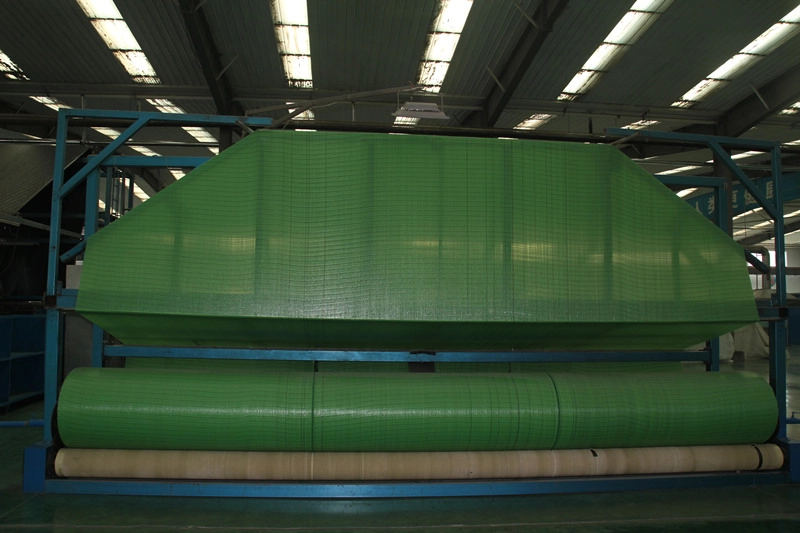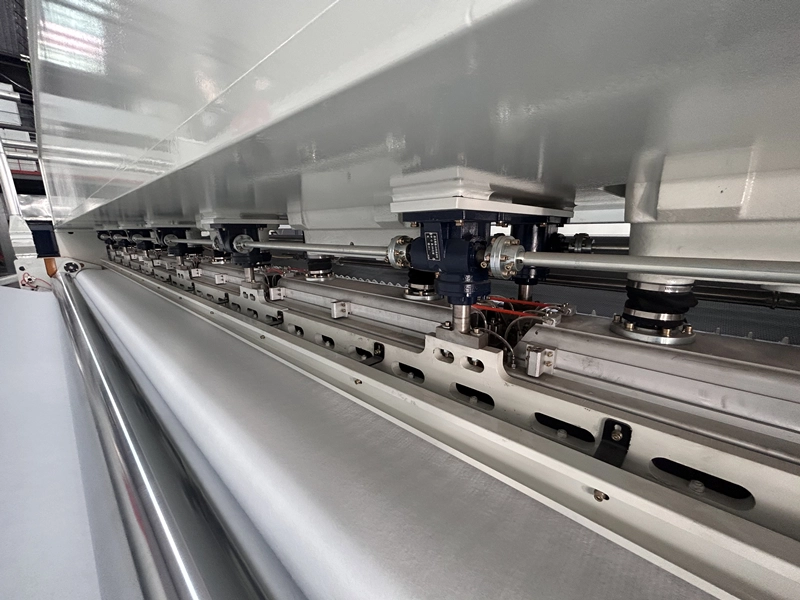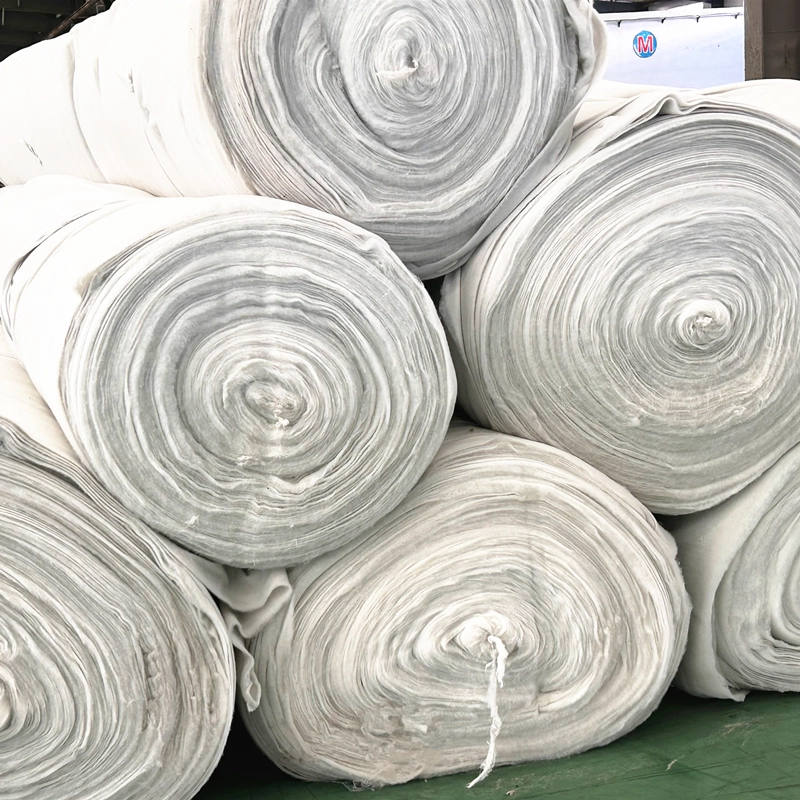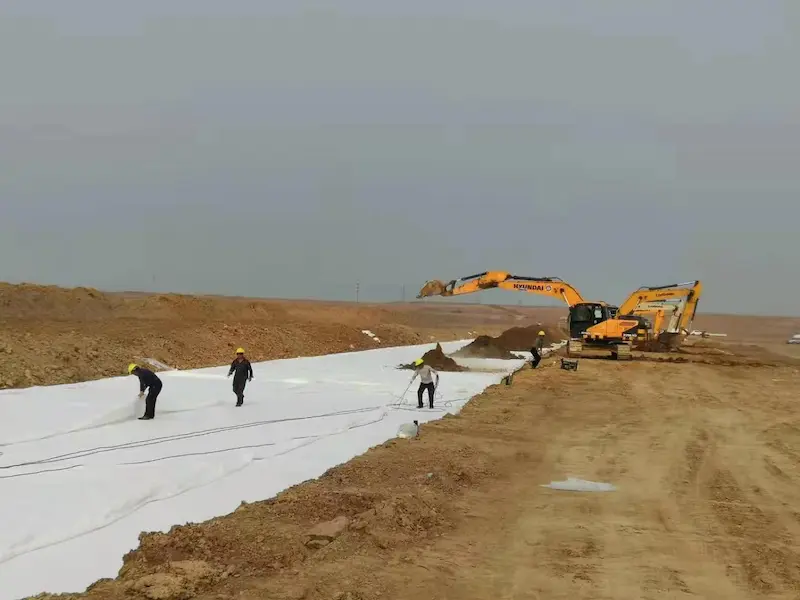As a geosynthetic geosynthetic reinforced embankment material, geotextile can demonstrate many advantages, including:
6. Wide adaptability: Geotextiles can be selected in different types and specifications according to different engineering needs, and are suitable for road construction, (1) water conservancy projects, environmental protection projects and other fields.
Terrain adaptability: Geotextiles are suitable for different terrains, including flat areas, hillsides, river banks, etc., and can flexibly respond to the construction needs of different terrains.
(2) Soil adaptability: Can be used in various soil types, including sand, loam, clay, etc. Different types of geotextiles can be selected according to the characteristics of the soil to meet the requirements of different projects.
(3) Climate adaptability: It has good weather resistance and UV resistance, and can be used in different climate conditions, including high temperature, low temperature, humidity and other environments.
(4) Water environment adaptability: Geotextiles are widely used in water conservancy projects, including rivers, lakes, reservoirs and other water environments, and have the characteristics of anti-penetration and anti-water erosion.
(5) Wide range of applications: Geotextiles are used in various fields, including basic engineering, water conservancy engineering, traffic engineering, environmental engineering, landscaping, etc., meeting the diverse needs of geosynthetic materials in different fields.
(6) Multifunctionality: Geotextiles can not only be used for soil reinforcement, anti-penetration, and anti-corrosion, but can also be used in combination with multiple functions such as drainage layers and filtering layers, which improves its adaptability in engineering.
(7) Customized application: Geotextiles can be customized according to specific project needs, including the selection of different specifications, strengths, thicknesses and other parameters to meet the special requirements of different projects.
Taken together, the advantages of geotextile's wide adaptability make it a multi-functional and multi-field geosynthetic material such as geosynthetic reinforcement retaining wall that can meet the specific needs of different projects and improve the stability and sustainability of the project.

Haoyang green flat wire geotextile warehouse workshop
7. Corrosion resistance: Geotextiles as geosynthetic reinforcement retaining wall are generally resistant to erosion by chemicals and microorganisms in the soil, maintaining a long service life.
(1) Chemical stability: Geotextiles usually use corrosion-resistant synthetic fiber materials, such as polypropylene (PP) or polyester (PET). These synthetic materials have excellent chemical stability and can resist the attack of many chemicals, including acids, alkalis, greases, etc.
(2) Resistance to acid and alkali corrosion: Geotextile performs well in acid and alkali environments and is not susceptible to corrosion by strong acids and alkali. This allows it to function stably for a long time in some special environments, such as areas containing acid rain or alkaline soil.
(3) Resistance to salt water erosion: For projects in salt water environments such as coasts and river mouths, geotextiles can also demonstrate good resistance to salt water erosion and are not easily affected by salt.
(4) Resistance to biodegradation: The synthetic fibers of geotextiles are usually not easily eroded by microorganisms, fungi and other organisms, so they are not prone to biodegradation, which enhances their durability.
(5) Corrosion-resistant liquid: In some engineering environments containing corrosive liquids, geotextiles can demonstrate good corrosion resistance and are not easily damaged by liquid erosion.
(6) Anti-ultraviolet performance: Geotextiles are usually specially treated and have certain anti-ultraviolet properties, which can resist solar ultraviolet radiation and extend their service life.
These characteristics enable geotextiles to maintain stable performance in various harsh environments, improving their applicability and reliability in different projects such as geosynthetic reinforcement retaining wall.
8. Convenient construction: The installation of geotextile is relatively simple and can be quickly carried out through laying and fixing, reducing the difficulty of construction.
(1) Light and easy to carry: Compared with traditional civil engineering materials, geotextiles are usually lighter and easier to carry and transport. This makes handling and operation on the construction site more convenient.
(2) Easy to cut and adjust: Geotextiles have good cutability and can be cut and adjusted according to actual needs to adapt to construction sites of different shapes and sizes.
(3) Simple construction technology: The installation of geotextile is relatively simple, usually only requiring simple process steps such as rolling, laying or welding. Compared with traditional earthworks, the construction period is shorter, which can greatly improve construction efficiency.
(4) No large machinery is required: In some small projects, the construction of geotextile does not require large machinery and equipment, reducing construction costs and dependence on equipment, making construction more economical and flexible.
(5) Strong adaptability: Geotextiles can be selected in different types and specifications according to the needs of specific projects, and have strong adaptability. At the same time, its flexibility and plasticity allow it to better adapt to irregular terrain and special construction conditions.
(6) No water source required: The installation of geotextile generally does not require a large amount of water source. Compared with some traditional construction methods, there is no need for a large amount of irrigation or wet work, reducing dependence on water resources.
These characteristics and advantages make geotextiles as geosynthetic reinforcement retaining wall more flexible and convenient in construction, and are especially suitable for some engineering projects that have requirements on construction conditions and cycles.

Haoyang green flat yarn geotextile production equipment workshop
9. Economic benefits: The use of geotextiles can improve the stability and durability of the project, reduce maintenance costs, and thus bring economic benefits.
(1) Reduce construction costs: Compared with traditional earthwork materials, such as concrete, masonry, etc., geotextiles are usually cheaper. In some foundation reinforcement and protection projects, the use of geotextiles can significantly reduce the overall construction cost.
(2) Reduce labor and equipment investment: The installation of geotextile is relatively simple and does not require large mechanical equipment and a lot of labor, which reduces labor and equipment investment, thus reducing the labor cost of construction.
(3) Shorten the construction period: Since geotextile construction is relatively simple and can be quickly laid and fixed, the construction period can be greatly shortened compared with traditional earthworks. This helps reduce management and supervision costs during construction.
(4) Improve project efficiency: The use of geotextiles can improve construction efficiency and reduce the time required to wait for concrete to solidify in traditional earthwork projects, making the entire project more continuous and efficient.
(5) Extend project life: As a highly durable material, geotextile can provide a long service life. Its anti-penetration and anti-erosion properties help slow down the aging of the foundation soil, thereby extending the life of the entire project.
(6) Reduce maintenance costs: Since geotextile has anti-aging, corrosion-resistant and other properties, it reduces the frequency of maintenance and repair and reduces maintenance costs.
These economic benefits and advantages make geotextiles more competitive in engineering construction and provide support for the sustainability and economic benefits of the project.
10、Sustainability and environmental protection: Geosynthetic materials usually have a long service life, which can reduce the maintenance frequency of the project, thus improving the sustainability of the project. At the same time, it can also reduce soil excavation and transportation during the construction process, and has less impact on the environment.
(1)Long life and durability: Geotextiles are usually made of high-quality polymer materials with excellent weather resistance and anti-aging properties, so they have a long service life. This means that in the same application, the longer service life of geotextiles can reduce more frequent replacement and maintenance, reducing resource consumption.
(2)Recyclability: Most geosynthetics are recyclable at the end of their useful life. By recycling and reusing geotextiles, the demand for raw materials can be reduced and the generation of waste can be reduced, thereby achieving effective recycling of resources.
(3)Reduced Earth Excavation and Filling: The application of geotextiles often reduces the need for earth excavation because it provides the required strength and stability over thinner layers of soil. This helps reduce damage to native soil, protects ecosystems and slows soil erosion.
(4)Reduced environmental impact: The use of geotextiles often reduces environmental disturbances in traditional civil engineering, such as reducing large areas of soil excavation and transportation. This helps protect vegetation, water resources and wildlife habitats and slows ecosystem damage.
(5)Reduce the impact of construction on the surrounding environment: Geotextile construction is relatively simple, reducing environmental impacts such as excavation, vibration and noise at the construction site, and helping to maintain the surrounding ecological balance.
Taken together, as a geosynthetic material, geotextile can better balance the relationship between human activities and environmental protection in engineering practice through its sustainable and environmentally friendly characteristics.
Taking these advantages into consideration, geotextiles are widely used in various projects, providing reliable support and solutions for civil engineering.
![]() 300g PET geotextiles test report.pdf
300g PET geotextiles test report.pdf
![]() 200g Staple fiber non-woven geotextile.pdf
200g Staple fiber non-woven geotextile.pdf




503.webp)
759.webp)

628.webp)
